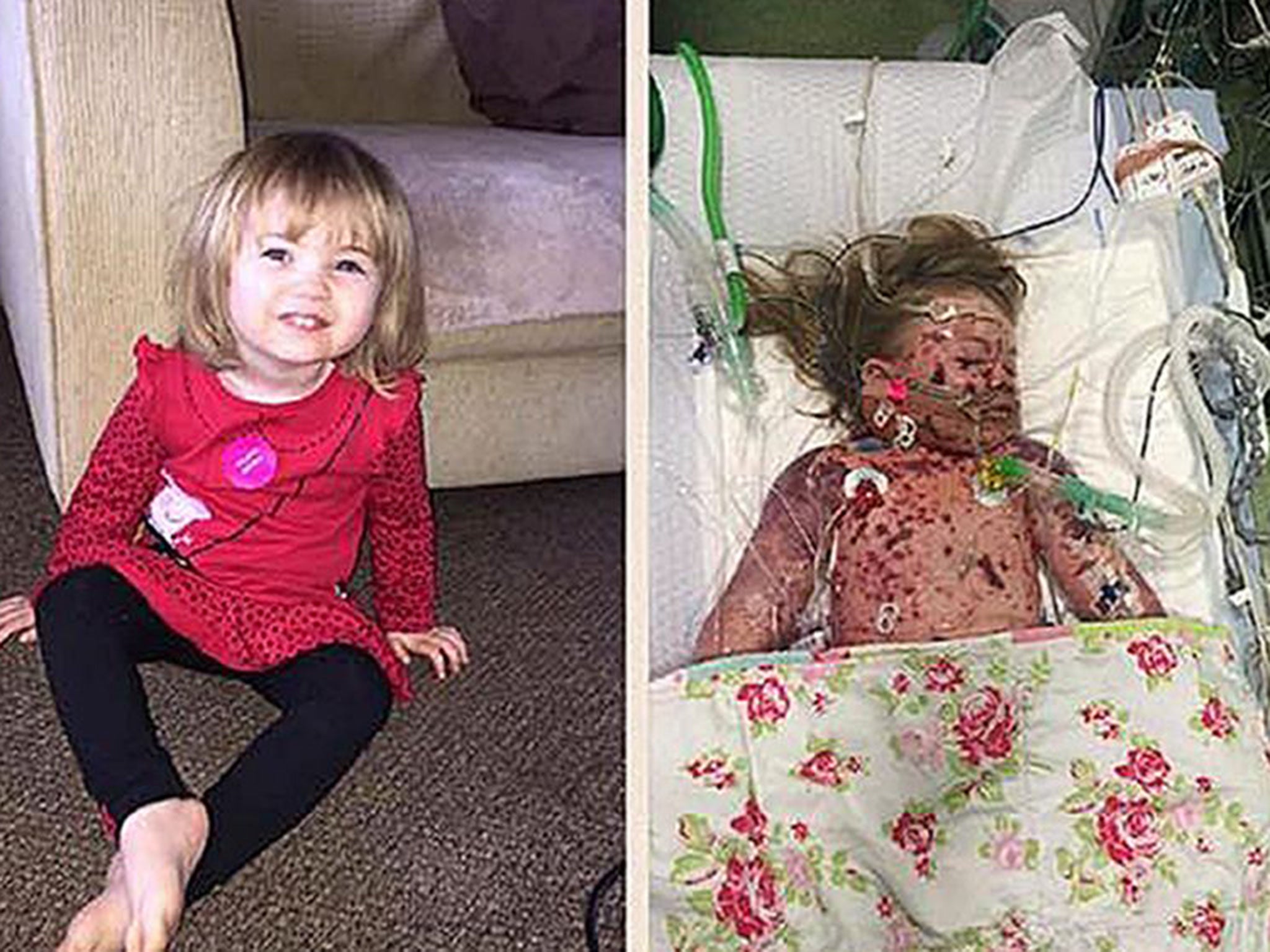What is meningitis and what are the symptoms?
Menigitis has hit headlines after a family shared a photograph of a two-year-old before she died of the disease

A family that shared a photo of a two-year-old child covered by a meningitis rash before she died has prompted over 310,000 people to sign a petition calling for all children to be vaccinated against the disease.
Faye Burdette died of meningitis B in mid-February after she developed a rash on her forehead.
Her family shared the photograph of the toddler seemingly unconscious in hospital and covered in an aggressive-looking red rash across her body to raise awareness of the condition.
“This is a photo of Faye, two years old, who sadly lost her life to this dreadful disease. We campaign for change in her memory,” her family said.

What is meningitis?
Meningitis is the term used to describe when the membranes which protect the brain and spinal cord become inflamed.
This can be caused by a virus or bacteria, with the former being the most common.
Bacterial meningitis can cause blood poisoining and in turn lead to severe brain damage, amputations and, in some cases, death, according to the NHS.
While viral meningitis does not generally lead to septicemia, it can lead to life-changing side-effects.
How many forms of meningitis exist?
The most common bacterium which cause meningitis B are meningococcal, pneumococcal, tuberculosis, group B streptococcal and E.coli, and Hib.
However, it is not possible to tell whether meningitis is viral or bacterial by looking at external symptoms, and a doctor will need to carry out clinical tests.
The NHS therefore urges that every case of meningitis should be treated as a medical emergency and an ambulance should be requested by dialling 999.
What are the symptoms?
Babies and young children under five-years-old are at most risk of developing bacterial meningitis because their body’s defences are not yet developed, but it can affect any age group.
Many different viruses can cause the viral form of the condition, with the most common being enteroviruses that live in the intestines and commonly cause colds and digestive problems.
The signs of the bacterial meningitis manifest themselves different in infants and adults.
Babies or young children with meningitis may have pale, blotchy skin with a red rash that doesn’t fade into white if pressed against a glass, according to the NHS. This appears on the skin in tiny “pin pricks” and can form into purple bruising.
A tense, bulging spot may appear on their forehead, known as a fontanelle.
They make also be distressed by bright lights; vomit or refuse to eat; experience a high fever with cold hands and feet; and become drowsy and unresponsive; and refuse to be picked up.
Their breathing may become rapid and grunting, and their cry have an unusually high-pitched or moaning tone. A stiff neck and seizures are also signs.
Adults can also show a rash; experience a fever with cold hands and feet; vomiting; drowsiness; as well as confusion and irritability.
Severe muscle pain is also a sign, as well as an intense headache, stiff neck, sensitivity to light and seizures.
Signs of viral meningitis are comparable to the flu, and include headaches, a fever with cold hands and feet. When viral meningitis becomes more serious a stiff neck, muscle and joint pain, vomiting, diarrhoea and sensitivity to light are experienced.
However, the NHS stresses that those concerned by their or another person’s symptoms should not wait for a rash to develop, but should seek medical help immediately.
How is it spread?
Bacterial meningitis is spread by sneezing, coughing, kissing, sharing kitchen utensils, and sharing a toothbrush or cigarette, according to the NHS.
Viral meningitis is usually spread by hand to mouth transmission, but most people infected show no or mild signs.
How is it treated?
Those who have meningitis B need to be admitted to hospital urgently, where they will be given antibiotics.
As antibiotics cannot attack a virus, patients must be cared for, help hydrated and given painkillers until they recover.
For further information, contact www.meningitisnow.org
Join our commenting forum
Join thought-provoking conversations, follow other Independent readers and see their replies
Comments